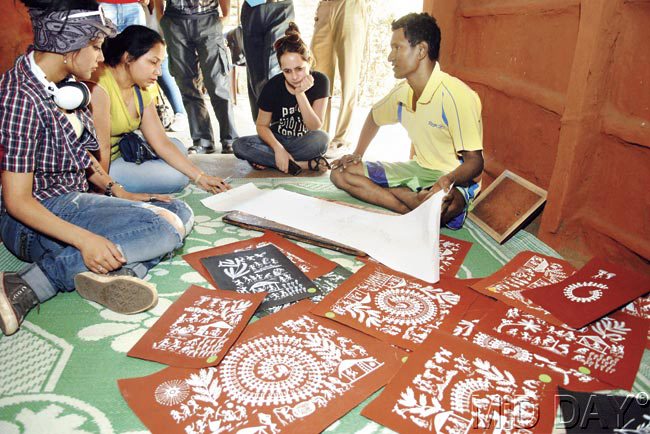India is known for its folk art – which originates from tribes in different parts of the country. In the North Sahyadri mountain range of Maharashtra, lives the Adivasi tribe by the name of ‘Warli’. They respect nature and wildlife for the resources provided by them for their sustenance. The perspective of their paintings wasn’t religious or cultural. It was primarily based on an artistic point of view.
The simple pictorial language of Warli art is the result of a basic technique. These extremely simple wall paintings use a basic graphic vocabulary – a circle, a triangle and a square. The circle drawn from nature represents the sun and the moon while the triangle is derived from mountains and pointed trees. The square indicates a sacred enclosure, for the mother goddess, symbolising fertility. Scenes portraying hunting, fishing and farming, festivals and dances, trees and animals portray the visual glances of their nature-oriented lifestyle.
Warli artists have traditionally used series of dots and dashes in their paintings. However modern artists have begun to draw straight lines in their version of Warli art. Artists have also started painting on paper and cloth. Warli motifs are also finding expression on pottery, and on lifestyle products including home décor and accessories. The essence of Warli Art is highly impactful when done on walls or in the form of huge murals that bring out the world of the tribal people.

